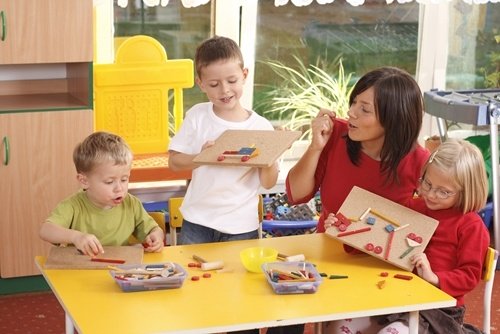- Help Center
-
1-800-774-7785Login

Blog
3 occupational therapy crafts for fine motor skills

Developing fine motor skills is important for growing children as well as adults who have experienced trauma such as a motor vehicle accident or internal injury. Whether patients are learning these skills for the first time or relearning them later in life, there are several ways to make the process easier and more enjoyable. These crafts are interesting, stimulating and, above all, effective tools as part of a therapy regimen. Check them out below:
1. Miniature sandbox letters
This craft helps with pre-writing skills and can help to strengthen control over the muscle of the hand and wrist. It was recommended by 4K teacher Abby Linwood, writing for the University of Wisconsin.
Materials:
- A small, shallow box.
- Clean white sand.
- Individual cards with letters on them.
Picture this craft as a small Zen garden. Place the sand in the shallow box and create a smooth surface. Collect the letter flashcards and show them to the patient one at a time. The patient should trace what he or she sees in the sand. It might be easiest to start with uppercase letters before moving to lowercase. If you don’t have access to sand, you can use other materials such as shaving cream on a flat surface!
2. Object sorting with clothespins
This craft comes from Michigan State University. It’s designed to improve fine motor skill and develop hand-eye coordination. The resistance from the clothespin can also help strengthen the muscles of the hand. This is a fun activity that can be done in a therapy setting or at home.
Materials:
- A clothespin.
- Seven shallow cups or bowls.
- Colored beads, cotton balls or other small objects.
To set up this project, arrange six of the cups into two rows. Each cup should be labeled with a color. The seventh bowl or cup should be filled with a mix of multicolored beads. Any small objects that are easily picked up with a clothespin will suffice. The patient should then use the clothespin to pick up the colored objects and place them into the corresponding cup. Different arrangements of the cups can be used to make the project easier or more challenging.
3. Puppet making
This craft, suggested by the Lynden School District in Washington State, is particularly fun, because the end result is a colorful creation that the patient can play with afterwards. It can also be modified for various skill levels.
Materials:
- Paper.
- Newspaper.
- Colored pencils or markers.
- Scissors.
- Other decorations.
The supervisor should cut two outlines of a puppet figure – for extra fun this can be themed to the closest holiday – then staple the sheets along the edges, leaving a space at the bottom for stuffing. The patient can color in the figure or attach other decorations such as cotton puffs, beads or sequins. Next, the patient should tear the newspaper into small strips and crumple them into balls. The crumpled paper is then inserted into the bottom of the puppet until it is full. Finally, the supervisor can staple the puppet closed at the bottom.
